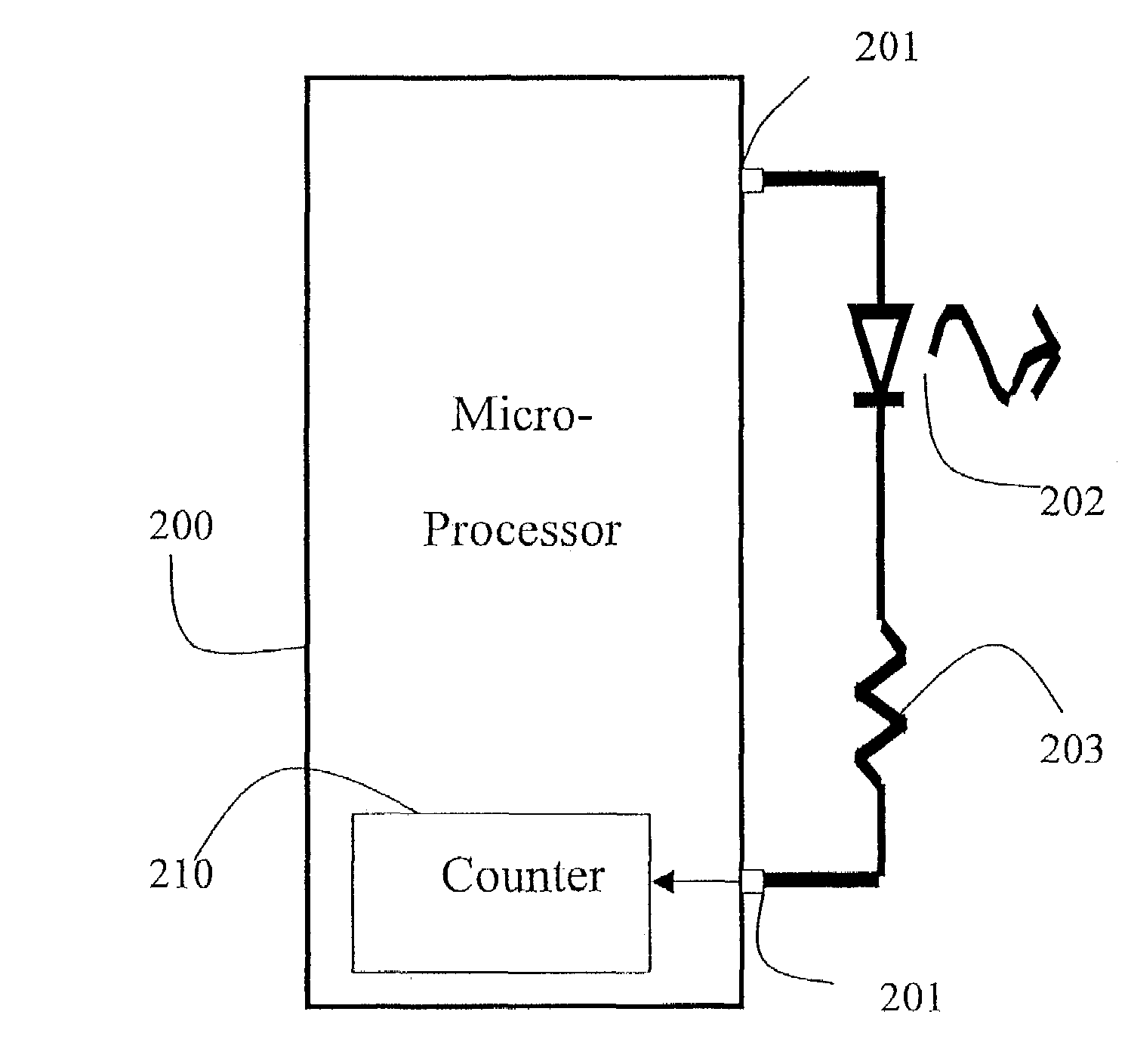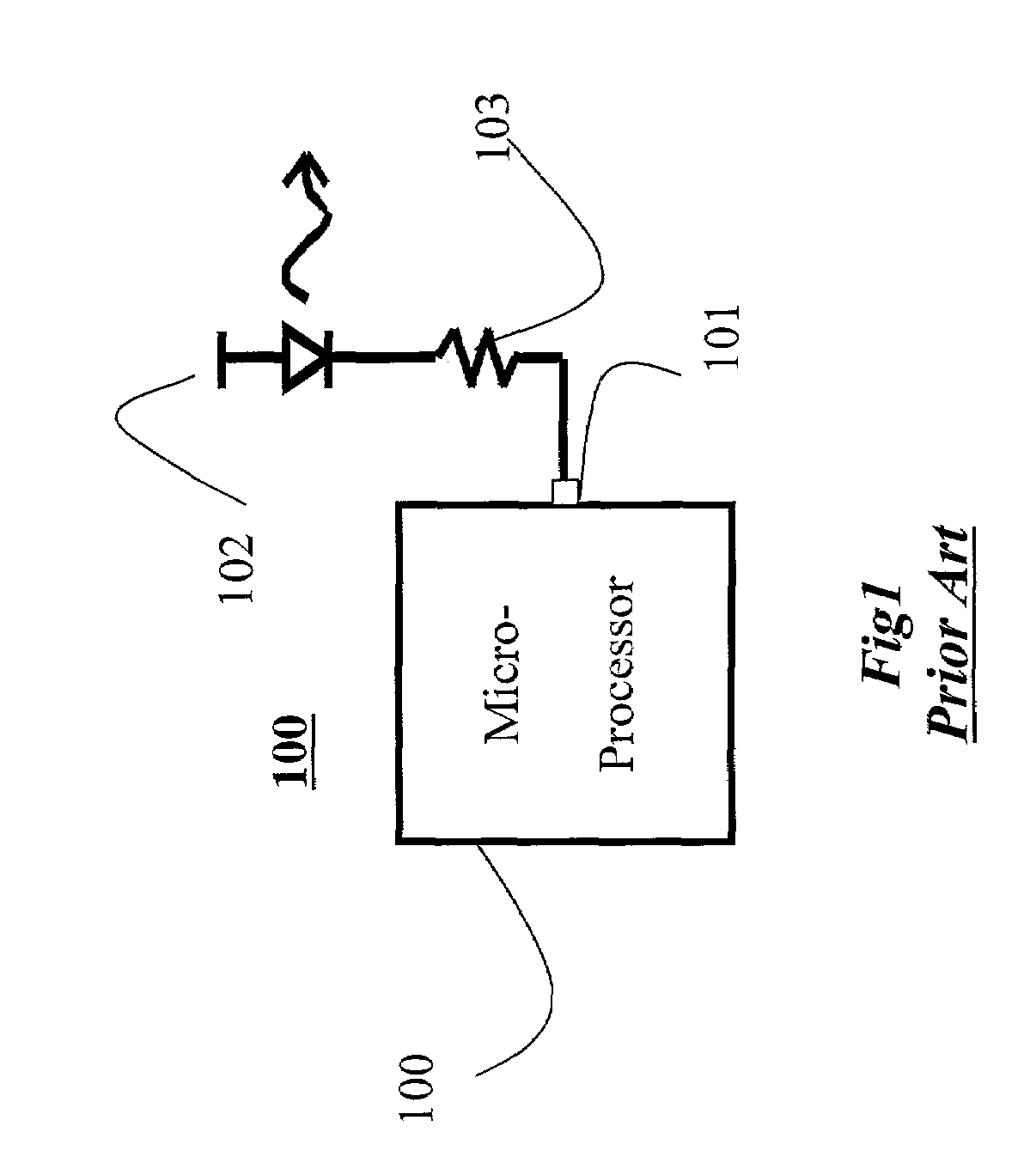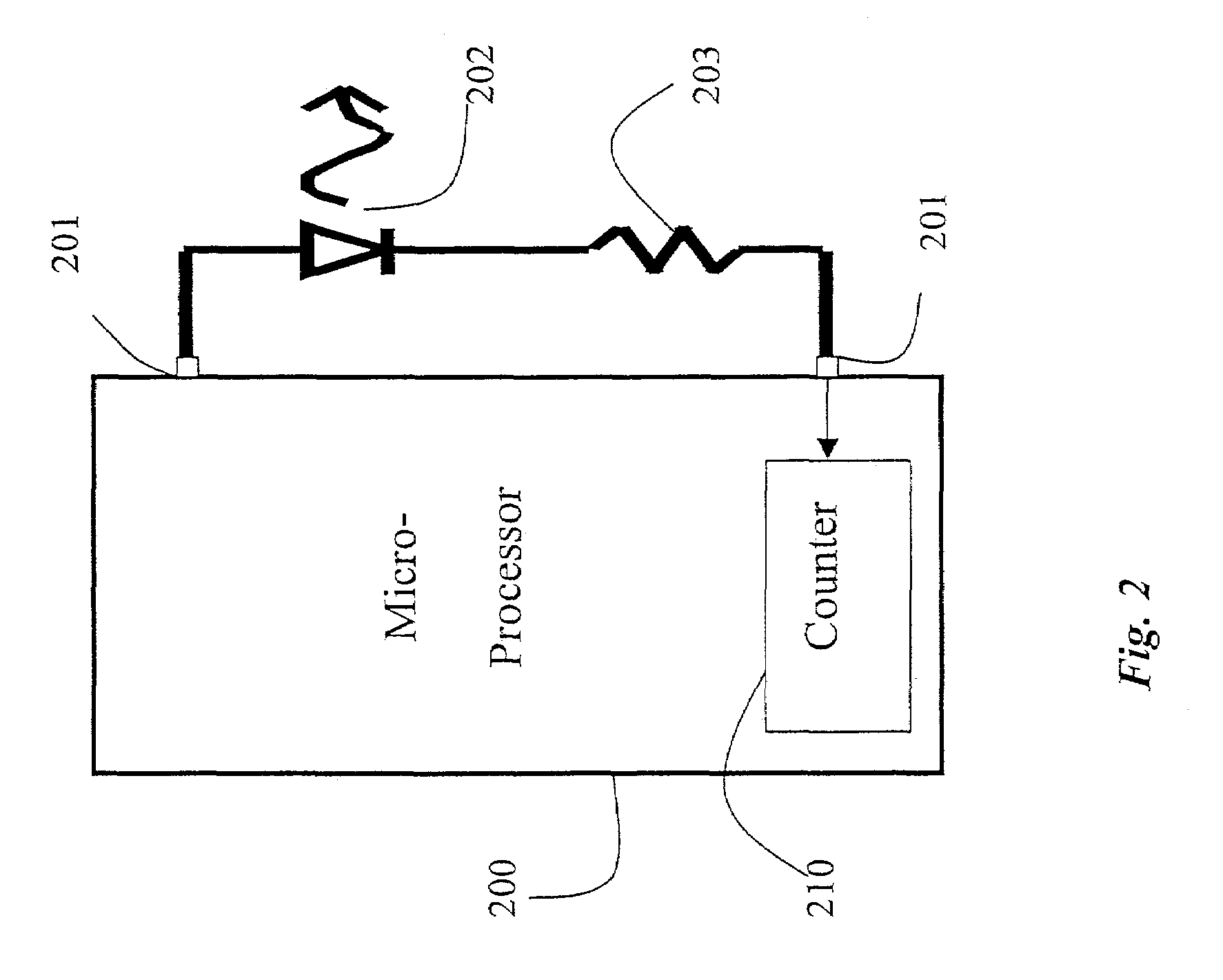Communication using bi-directional LEDs
a technology of leds and optical communications, applied in the field of light-emitting diodes, can solve the problems of increasing the cost and complexity of the communication system, and the difficulty of accurately controlling the voltage applied directly across the led to achieve the desired curren
- Summary
- Abstract
- Description
- Claims
- Application Information
AI Technical Summary
Problems solved by technology
Method used
Image
Examples
Embodiment Construction
Dual Pin LED Data Transceiver
[0018]FIG. 2 shows an LED emitter / detector circuit according to the invention. Here, an LED 202 and resister 203 are coupled in series between two I / O pins 201 of a microprocessor or microcontroller 200. Now both ends of the LED / resistor circuit 202-203 are connected to the microprocessor 200. The I / O pin can be set low (0V), high (5V), or the pin can be used as an input, using conventional programming techniques.
Operating Modes
[0019]FIGS. 3a–c show how this circuit can operate in three modes, forward bias or “light,” not forward bias or “reverse bias” and “discharge,” or sense respectively. In the light mode of FIG. 3a, the LED operates conventionally and emits light. The emitted light can be modulated to transmit data. In reverse bias mode of FIG. 3b, the normal emitting polarities are switched to reverse bias the junction of the diode. By then releasing one end in discharge mode of FIG. 3c, i.e., setting that end to be an input to the microprocessor, ...
PUM
| Property | Measurement | Unit |
|---|---|---|
| forward voltage | aaaaa | aaaaa |
| voltage | aaaaa | aaaaa |
| capacitance | aaaaa | aaaaa |
Abstract
Description
Claims
Application Information
 Login to View More
Login to View More - R&D
- Intellectual Property
- Life Sciences
- Materials
- Tech Scout
- Unparalleled Data Quality
- Higher Quality Content
- 60% Fewer Hallucinations
Browse by: Latest US Patents, China's latest patents, Technical Efficacy Thesaurus, Application Domain, Technology Topic, Popular Technical Reports.
© 2025 PatSnap. All rights reserved.Legal|Privacy policy|Modern Slavery Act Transparency Statement|Sitemap|About US| Contact US: help@patsnap.com



